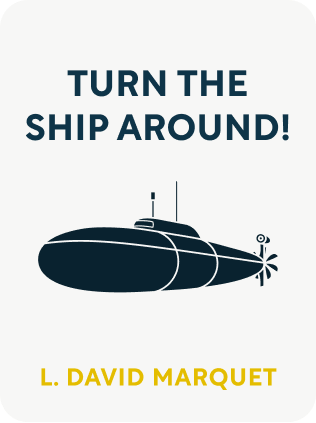

This article is an excerpt from the Shortform book guide to "Turn the Ship Around" by L. David Marquet. Shortform has the world's best summaries and analyses of books you should be reading.
Like this article? Sign up for a free trial here .
How can you leverage transparency in the workplace to strengthen your organization? What if you created an atmosphere of embracing outside oversight?
It can be tempting to handle organizational problems in house and keep them out of the view of auditors. David Marquet chose not to go that route. Instead, he embraced the inspectors, which necessitated transparency in the workplace. In this case, the workplace was a submarine.
Read more to learn how transparency in the workplace can move your organization forward.
Welcome Outside Oversight
When Santa Fe arrived in port, the crew needed to hook up four shore power cables so it could shut down its reactor. During this process, a petty officer violated a critical rule. He activated breakers on the pier when he knew it was safe to do so, but without getting clearance to do it. No harm was done but he’d violated a “red tag.” Red tags are attached to critical controls on a submarine so that they can’t be removed to activate the controls without going through clearance procedures.
Transparency in the workplace was not a typical mode of operation in the Navy. Marquet was tempted to handle the violation in house because reporting it up the chain of command would result in additional monitoring and scrutiny. However, he decided to treat it as a learning opportunity and reported it to Squadron Seven as well as the Naval Reactors unit, which ensured the nuclear reactors were operated safely.
Marquet scheduled a critique of the incident for the next day and invited both oversight groups to attend. He referred to this approach as “embracing the inspectors.”
Mechanism: ‘Embrace the Inspectors’
Transparency in the workplace can be difficult, but Marquet knew that it was healthy. Rather than fearing inspectors, Marquet and his staff viewed them as a resource. The inspectors could spread news of Santa Fe’s successes throughout the squadron, share the good ideas of other crews, and identify ways to improve the ship.
Welcoming inspectors sent a message that Santa Fe was responsible and in control of its destiny. In this sense, embracing inspectors is a mechanism for organizational control. Transparency in the workplace can keep you in the driver’s seat.
In contrast, most organizations aim to reveal as little as possible to outsiders or auditors, especially when there are problems.
Santa Fe’s crew members approached inspections with questions and curiosity. They acknowledged problems and asked for help solving them, an attitude that inspectors found surprising. As a result, Santa Fe typically got high grades and crew members became exceptionally skilled at their jobs.
Questions for Leaders
- How do you use outsiders—for instance, social media commenters and auditors—to improve your organization?
- How do the costs of transparency in the workplace compare to the benefits?
- How can you encourage your team to view inspectors as resources?

———End of Preview———
Like what you just read? Read the rest of the world's best book summary and analysis of L. David Marquet's "Turn the Ship Around" at Shortform .
Here's what you'll find in our full Turn the Ship Around summary :
- How a captain turned the U.S. Navy’s worst-performing nuclear submarine crew into one of the best
- The principles for developing leaders at all levels to create a passionate, high-performing workforce
- Why the "leader-leader" model works better than the "leader-follower" model






